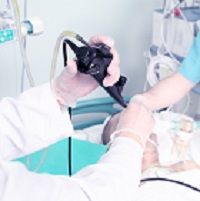Article
FDA Requires Manufacturers to Investigate Infection Risk Associated with Duodenoscope Use
Author(s):
The US Food and Drug Administration requested three manufacturers of duodenoscopes – Olympus America, Inc. Fujifilm Medical Systems, USA, Inc., and Hoya Corp – to perform real-world postmarket surveillance studies duodenoscopes used to perform endoscopic retrograde cholangiopancreatography procedures (ERCP).

The US Food and Drug Administration requested three manufacturers of duodenoscopes — Olympus America, Inc. Fujifilm Medical Systems, USA, Inc., and Hoya Corp – to perform real-world postmarket surveillance studies duodenoscopes used to perform endoscopic retrograde cholangiopancreatography procedures (ERCP).
William Maisel, MD, MPH, deputy director for science and chief scientist at the FDA’s Center for Devices and Radiological Health, remarked, “These studies will provide critical information about the effectiveness of current reprocessing instructions and practices that may provide additional information to inform the FDA’s actions to protect the public health and help reduce the risk of infections.”
The FDA is investigating “the factors that may play a role in infection transmission associated with duodenoscopes, and is now requiring manufacturers to study the devices in the clinical setting where they are being used,” said Maisel.
More than 500,000 ERCPs are performed annually. Although they are often life-saving and considered the least invasive of fluid draining procedures, the FDA has discovered evidence pointing to duodenoscopes’ association with the transmission of infections.
Experts understand that the complex design of duodenoscopes could potentially contribute to the difficulty in removing certain contaminants compared to other types of endoscopes.
From today, the three manufactures have 30 days to submit to the FDA their strategy for post-market surveillance plans. The detailed plans are expected to highlight how they will conduct studies to evaluate how well health care professionals follow instructions to clean the duodenoscopes and the rate of contamination of clinically used devices.
The FDA requires the manufacturers to be able to answer the following three questions:
1. Are user materials, such as user manuals, brochures, and quick reference guides included in the manufacturers’ duodenoscopes labeling and instructions for use, sufficient to ensure user adherence to the manufacturers’ reprocessing instructions?
2. After use of the manufacturer’s validated reprocessing instructions, what percentage of clinically used duodenoscopes remain contaminated with viable microorganisms?
3. For devices that remain contaminated after use of the manufacturers’ labeled reprocessing instructions, what factors contribute to microbial contamination and what steps are necessary to adequately decontaminate the device?
The FDA hope this significant step in monitoring the device’s activity in clinical settings would help protect the public health and combat the risk of duodenoscope infections.




